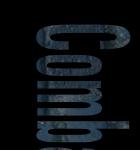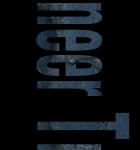| Specification
|
Photo Gallery
|
Photo Gallery
4 |
Model Gallery
|
| Specification
2 |
Photo Gallery
2 |
Photo Gallery
5 |
Model Gallery
2 |
| From
CMV 3/1 |
Photo Gallery
3 |
Photo Gallery
6 |
Reserved
|
    |
A brief description of
C.E.T. |
|
| The
Combat Engineer Tractor ( C.E.T.) is a unique Armoured vehicle designed specifically for
undertaking engineering tasks in a front line combat zone, the vehicle is also capable of
undertaking a variety of lifting, digging and light recovery tasks. The CET started as an international project between West Germany, France and the UK. Following the withdrawal from the project of the European partners, the UK continued with the design and the production of two test rigs in 1968. During the period 1973 -1974 , 7 prototypes were completed, and production of 141 vehicles for the British Army commenced in 1977. The CET entered service with the British Army during 1978, and served during the Falklands war, in large numbers during the Gulf war, and more recently in Bosnia, as part of the UK (UN) forces, CET is affectionately known as 'Frog' in British Army service. CET has a crew of two, Driver and Commander, both crew members are seated in the cupola area facing ' back to back' and are able to operate the vehicle using dual controls. The main feature of the vehicle is the huge excavating bucket at the rear of the vehicle, which can rapidly excavate tank and gun positions and remove obstacles. A large capacity winch is fitted for recovery, obstacle climbing and lifting operations. The winch can be used to the front or rear of the vehicle by using the 'flip-over' pulley on the hull roof edge. A lifting jib, which not normally carried, can be fitted to the bucket and is used in conjunction with the main winch for general lifting duties. The vehicle is constructed from aluminum Armour, and is proof against small arms fire and shrapnel, full NBC air filtration is also fitted. One specialist role is the preparation of riverbanks and bridge sites, the CET is fully amphibious and uses tracks and hydro jets for propulsion, and rigid and inflatable floats for buoyancy, including extra 'pods' fixed into the bucket. If the vehicle gets into problems getting out of a river, which many amphibious tanks have trouble with, the vehicle has one last feature, the Rocket Propelled Anchor (RPA). The RPA is stowed on the washboard, and when assembled on the roof of the CET, is fitted with one or two, depending on distance, rocket motors. When fired, the RPA trails a cable behind which is coupled to the main winch, this enables the vehicle to winch itself out of rivers, and up very steep embankments. |
||
| SPECIFICATION | ||
| Crew : | 2 | |
| Country of Origin : | United Kingdom |
|
| Manufacturer : | Royal Ordnance Nottingham, England | |
| Armament : | 1 x 7.62 mm MG ( optional ) 6 smoke dischargers |
|
| Length : | 7.3 m
( overall ) 5.334 m ( hull ) |
|
| Width : | 2.921 m (over bucket ) 2.87 m ( over hull ) |
|
| Height : | 2.83 m ( without RP anchor ) | |
| 3.41 m ( with RP anchor ) | ||
| Ground clearance : | 0.457 m | |
| Weight, Combat : | 18,000 Kg | |
| Power to weight ratio : | 17.77 HP/tonne | |
| Ground pressure : | 0.435 Kg / cm 2 | |
| Engine : | Rolls-Royce C6TFR 6 cylinder-in-line Diesel Developing 320 hp at 2,100 rpm |
|
| Maximum road speed : | 52 Km / hr | |
| Maximum water speed : | 2.5 m / s | |
| Range : | 320 Km | |
| Fuel capacity : | 418 lit. | |
| Fording : | 1.83 m, amphibious with preparation | |
| Vertical obstacle : | 0.61 m | |
| Trench : | 2.06 m | |
| Gradient : | 60 % | |
| Side slope : | 30 % | |
| Armour : | Classified | |
| Armour type : | Aluminum | |
| NBC system : | Yes | |
| Night vision equipment : | Yes Passive for commander and driver |
|